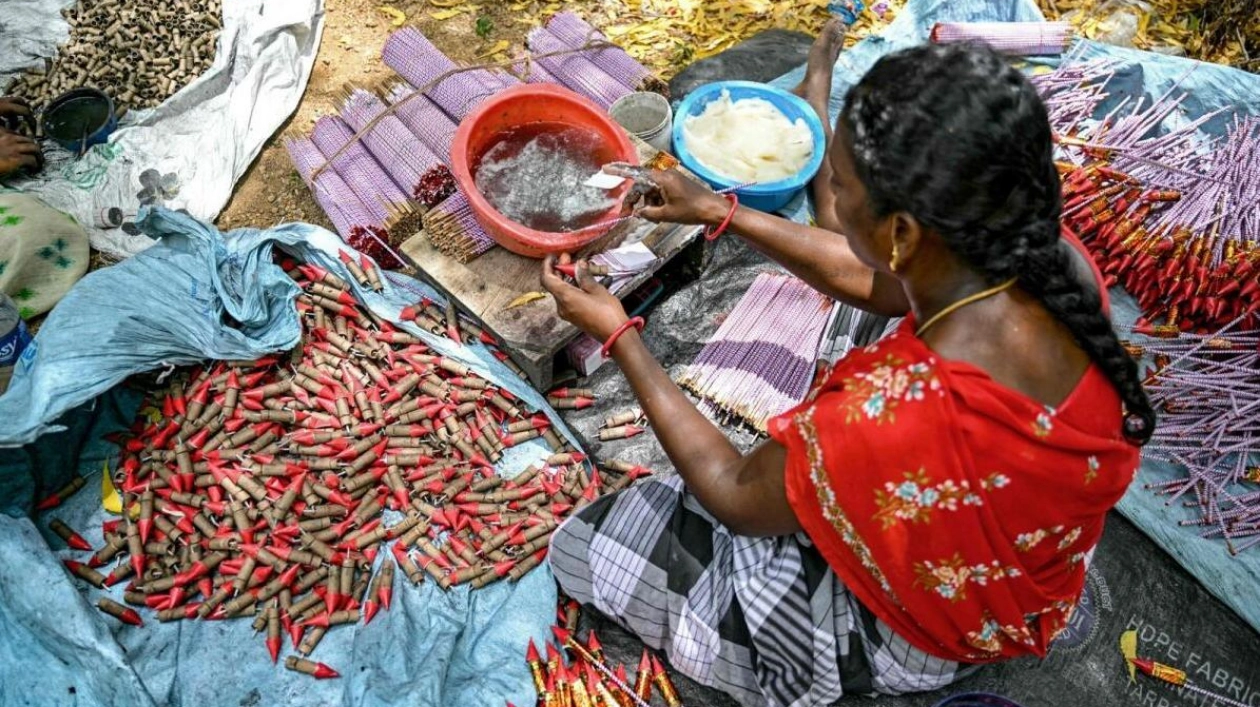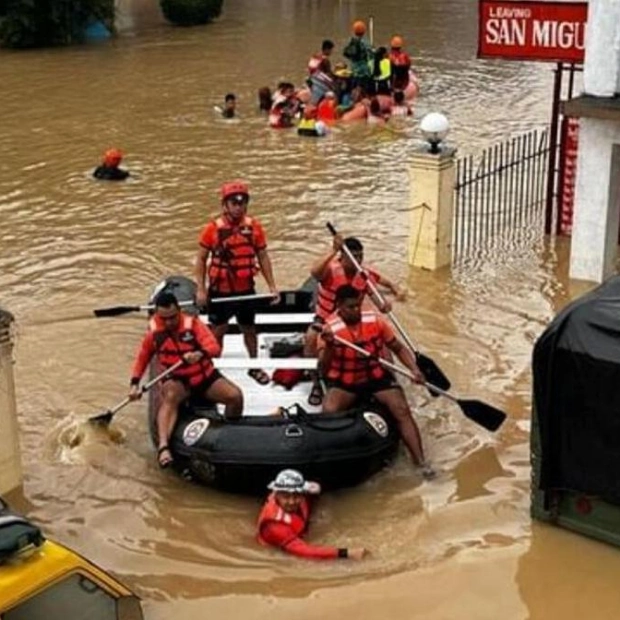A woman toils at a firecracker factory on the outskirts of Sivakasi in India's Tamil Nadu state, in preparation for Diwali, the Hindu festival of lights. – AFP
Wrapping mounds of cone-shaped sparklers in red paper and cutting lengths of silver fuse by the hundreds, workers at an Indian fireworks factory scramble to fulfill orders for Diwali, the Hindu festival of lights. Authorities frequently enforce bans on the smoky pyrotechnics to mitigate the hazardous pollution they generate, but for many, firecrackers are an essential part of the holiday's festivities. Toxic chemical fumes linger heavily in the air at the factory in Sivakasi, a city in the southern state of Tamil Nadu, the epicenter of India's fireworks production. It is a perilous job, with fatal explosions occurring annually in factories, but workers say they have few alternatives.
"There is no other job opportunity in the area," said 49-year-old Rajathi, taking a break from the rapid task of sealing explosives in colorful wrapping. Rajathi, who uses only one name, said she does not want her children to follow her into a job where she earns up to 800 rupees ($9.50) a day. Cigarette lighters and mobile phones are often prohibited inside the factory, where conditions are rudimentary. Workers, seated on the floor, dip fuses with bare hands into pots of a silver-colored mixture. Others spread glue onto wrappers with their fingers, while others lay out the handmade paper shells of the fireworks on mats to dry in the sun. Sivaraj, aged 29, is new to the job.
"I know there have been accidents in the factories before, but I need to work to eat," he said. Without formal education, he had few options. "That is why I came to work in a fireworks factory," Sivaraj said, who also uses one name. Diwali this year falls on November 1, and workers are busy packing boxes to meet the nationwide surge of demand. The potent chemicals used to give the sparkling explosives their color and noise contribute to the deadly toxic haze of vehicle emissions and factory fumes in cities that frequently rank among the worst in the world for air quality. India's capital New Delhi on Monday ordered a "complete ban" on all firecrackers – both their manufacture and sale – in view of the "public interest to curb high air pollution." But for many, Diwali would not be the same without the colorful and thunderous roar of crackers, and past bans have been widely disregarded.
The spectacular and colorful festival celebrates the Hindu deity Lakshmi and symbolizes the victory of light over darkness. The national holiday is marked by the exchange of gifts – and of course, the setting off of fireworks. In addition to the usual factory and vehicle emissions, smog in Indian cities this time of year is exacerbated by seasonal agricultural fires clearing harvest stubble for ploughing. But pollution levels surge even more around Diwali, driven by the extra fumes from fireworks. In New Delhi, levels of fine particulate matter – cancer-causing microparticles known as PM2.5 pollutants that enter the bloodstream through the lungs – often exceed more than 30 times the World Health Organization's danger limits. Prolonged exposure can trigger strokes, heart disease, lung cancer and other respiratory diseases, according to the WHO. More than seven percent of all deaths in 10 of India's biggest cities are linked to air pollution, according to a study published last year in The Lancet Planetary Health journal.






